10 April 2024
In an age of technological revolution, where every detail can affect the user experience, choosing the right way to charge electronics such as smartphones, tablets and laptops has become an important issue. Chargers are an essential accessory for any user of mobile devices. Among the many options available, everyone is faced with the choice between a charger with a USB cable and a version without a cable. Understanding the relationship between the different types of chargers, as well as the types and quality of USB cables, is key to optimising the charging process for electronic devices. In this article, we will look at the various options, highlighting their advantages and disadvantages, to help you make an informed choice.
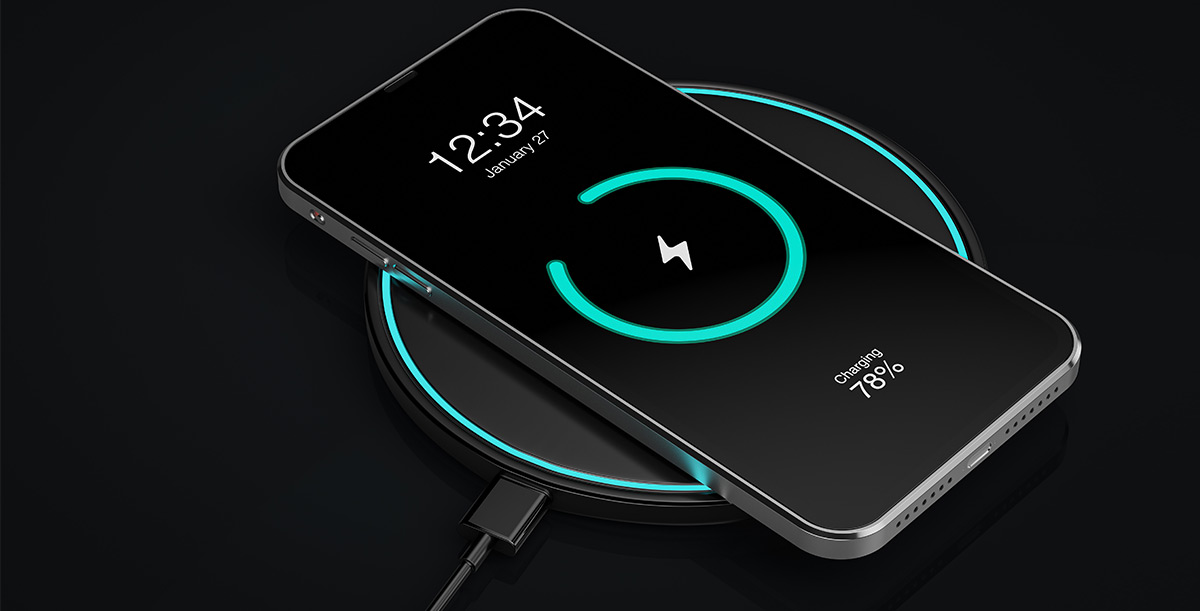
Types of chargers for your phone and other devices
Chargers are an essential piece of equipment in today's world full of electronics. Although they all have the same purpose - to charge our devices - they differ in design, application and charging technology. There are three main types of USB chargers:
- USB mains chargers - this is the most versatile type of charger, used in homes and offices. They plug directly into a power socket and charge devices using a USB cable. They are available in a range of wattages, from the standard 5W to fast chargers of 20W or more, allowing for faster charging of devices. These chargers are compatible with a variety of USB standards, including USB-A, micro USB-B and USB-C, and offer support for fast charging technology.
- Inductive (wireless) chargers - this is a modern solution for charging devices without the need for cables. It works on the principle of magnetic induction - energy is transferred from the charging cradle to the device. Inductive charging is usually slower than using a cable. However, it offers significant convenience and minimises cable clutter. Many new smartphones and electronic devices support wireless charging, making it an increasingly popular choice among users.
- USB car chargers - designed for people who spend a lot of time on the move. They plug into the cigarette lighter socket in the car, transforming it into a USB power source. They allow you to charge smartphones, tablets or navigation devices, which is extremely useful, especially on long journeys. Like mains chargers, they are available in a variety of wattages and allow you to charge your devices quickly.
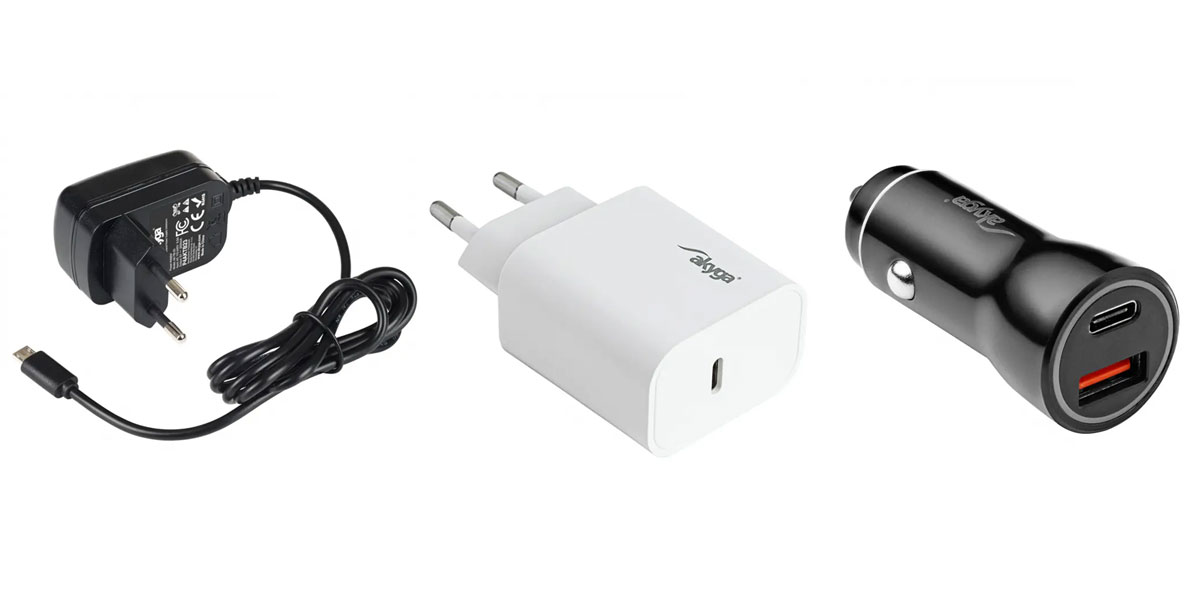
USB charger for fast charging - how does it work?
Modern technology allows for fast charging of most new mobile devices. However, it is crucial that both the charger, the cable and the device itself are compatible with this technology. It is worth remembering that the USB cable must be capable of transmitting a higher current. Otherwise, the device will be charged with lower power and therefore slower. USB-C to USB-C or USB-A to USB-C cables that support standards such as Quick Charge (QC) or Power Delivery (PD) are best suited to this. For example, USB-C cables are now the standard in fast charging, offering not only instant charging but also versatility thanks to the symmetrical connector.
There are a number of fast charging standards, each working slightly differently and often specific to a manufacturer or group of manufacturers. Among the most common are Quick Charge from Qualcomm, Fast Charge, Super Fast Charge, and Power Delivery. Which charge rates adapt to the current state of the battery. As it approaches full charge, it slows down, ensuring that the whole process is safe. We take a closer look at how these technologies work and the differences between them.
- Quick Charge (QC)
Quick Charge is a Qualcomm-developed technology that enables devices equipped with Qualcomm Snapdragon processors to charge quickly. The latest version - Quick Charge 5 - is capable of charging a battery from 0 to 50% in just 5 minutes. The technology uses intelligent power management to maximise charging speed. At the same time, it minimises the risk of overheating and damaging the battery. Quick Charge is compatible with previous versions, meaning that newer devices can use chargers that support older versions of the standard. - Fast Charge (FC) and Super Fast Charge (SFC)
Fast Charge and Super Fast Charge are terms often used by different manufacturers to describe their own fast charging technologies. For example, Samsung uses the term 'Super Fast Charging' for its flagship devices, which support charging at up to 45 watts or more. These terms do not refer to a specific technical specification, but rather are used for marketing purposes to emphasise the speed of charging compared to standard methods. - Power Delivery (PD)
USB Power Delivery is a universal fast charging standard supported by the USB-IF (USB Implementers Forum). It can be used by a wide range of devices, not just smartphones. USB PD is more flexible than other technologies as it allows devices to negotiate charging power up to 100 watts, making it ideal not only for charging phones, but also laptops and other devices requiring more power. USB PD is compatible with USB-C ports, making it easy to use the same charger for multiple devices. - Other standards
There are also other fast charging standards, such as Oppo's VOOC, OnePlus' Warp Charge, and Huawei's SuperCharge, which have been developed by individual manufacturers for their devices. Each of these standards has unique features and power management methods to optimise charging time and safety.
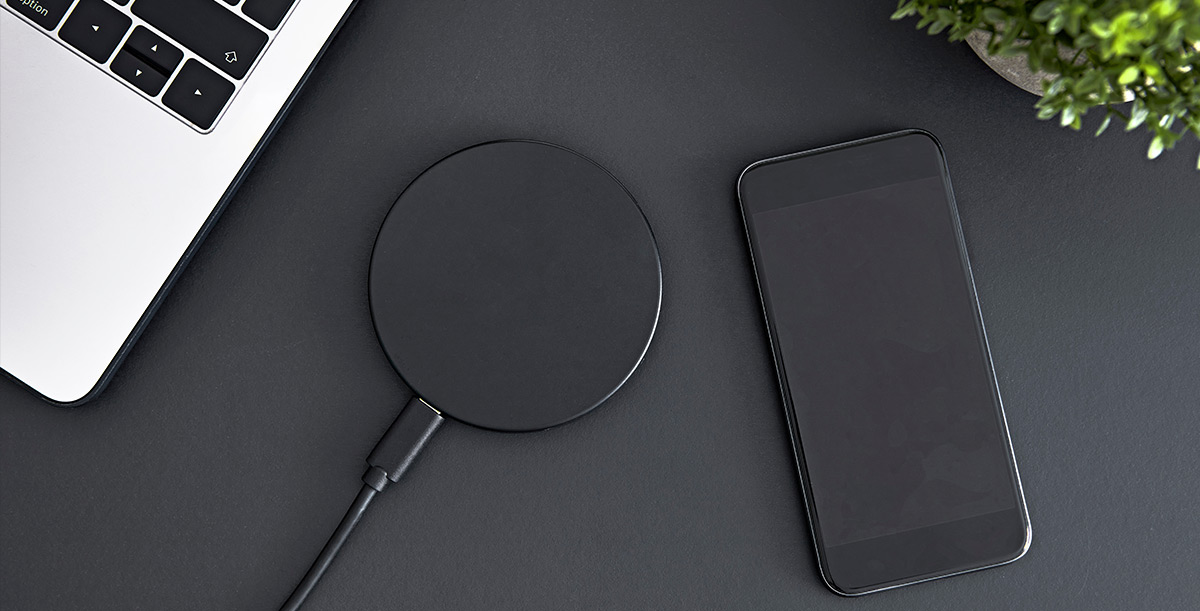
USB mains charger with cable - a traditional and proven solution
The main advantage of dedicated USB chargers is the built-in cable. This eliminates the problems that often occur with chargers with interchangeable cables. An ill-fitting cable that supports a lower power supply significantly prolongs the charging process. With a charger with a built-in cable, these problems do not occur because the cable is properly matched to the charger's parameters. This ensures optimum use of its capabilities and charging efficiency.
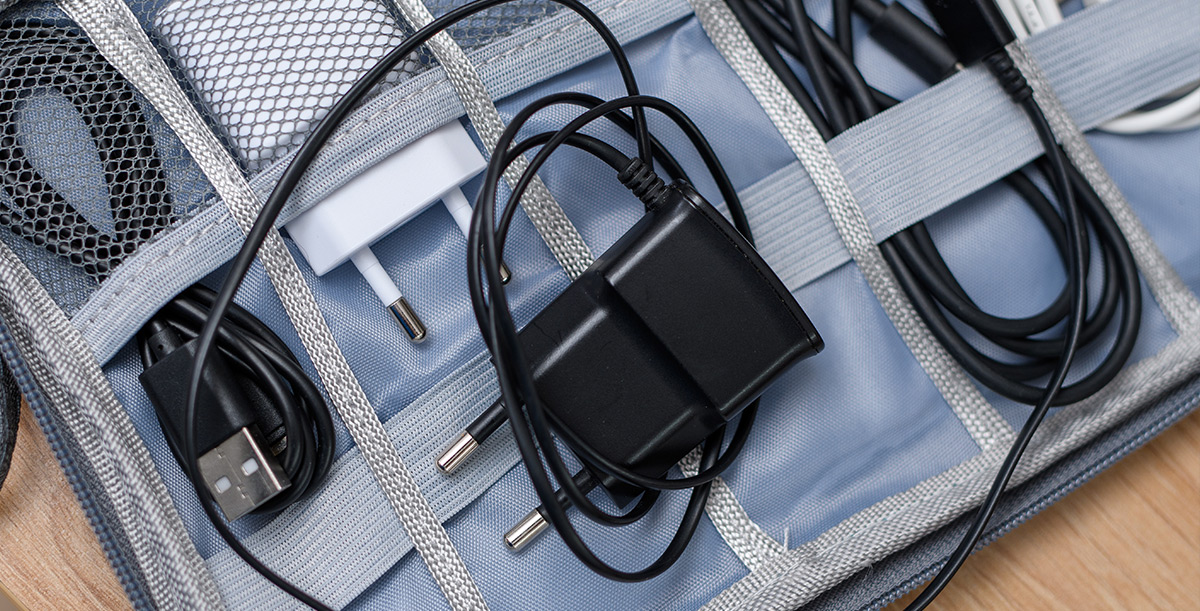
Which USB charger with cable should I choose?
Choosing the right charger depends on the device to be charged. It is worth paying attention to parameters such as maximum output power, fast charging compatibility and connector type. A universal USB charger is not only limited to charging smartphones or headphones, but is also capable of handling devices with higher power requirements, such as laptops.
Higher-powered chargers - 60 W, 90 W and even 100 W - are designed to adapt the power delivered to the needs of the connected device. Thanks to Power Delivery (PD) technology, such a charger can safely charge both a device requiring low power, such as a smartphone or headphones, and those needing significantly more power, such as a laptop. This means that users can reduce the number of cables and chargers. This is particularly useful for people who travel frequently.
Advantages of chargers with a cable:
- Ability to use the device while charging.
- Lower price with better performance compared to inductive chargers or a cube and USB cable kit.
- You get a complete set, ready to use right out of the box.
- You don't have to worry about finding a matching cable and you are assured of using the full potential of the charger.
- One charger with the right specifications will be compatible with a variety of devices, from headphones to laptops.
Disadvantages of chargers with a cable:
- The length of the cable is fixed, which can be inconvenient if the nearest electrical outlet is far away.
- Cables, especially those of lower quality, can be damaged by bending or twisting.
- It will not be universal if your devices have a variety of power connectors.
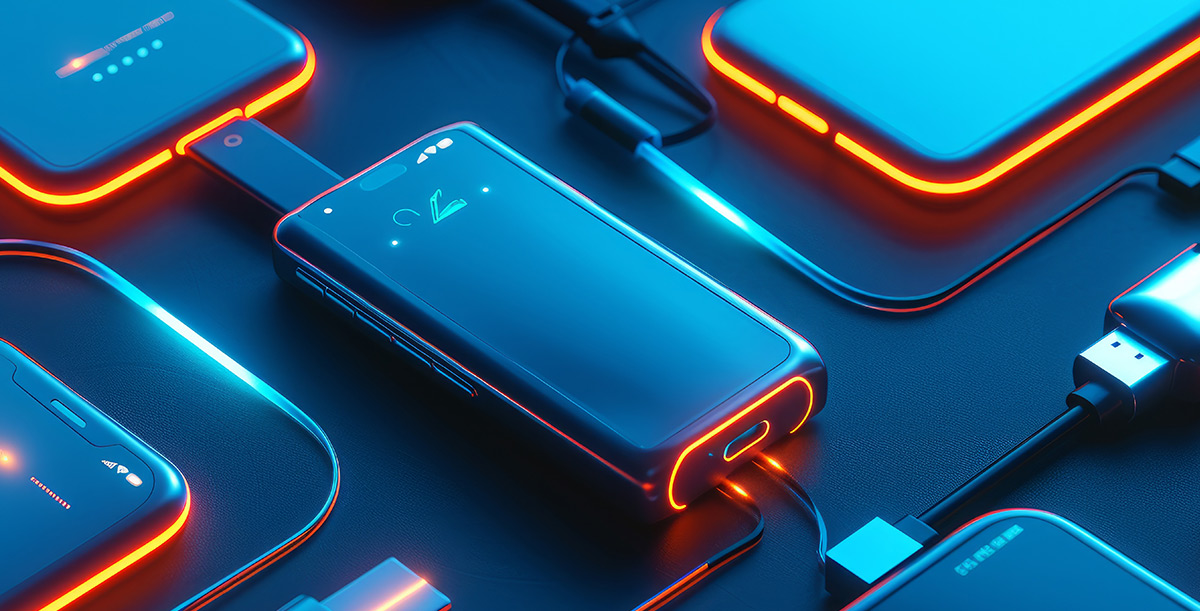
Charger without cable - charging cube
USB chargers without an attached cable are commonly referred to as charging cubes. Thanks to their compatibility with different types of cable, they offer users not only convenience but also versatility. For those who already have the right cable to charge their devices, they eliminate the need to purchase additional accessories. Their versatility allows them to easily fit a variety of devices. Both models with a single USB port and those with more ports are available, allowing multiple devices to be charged at the same time, which is beneficial for those looking for efficiency and space savings.
Advantages of cable-free chargers:
- Ability to use any USB cable.
- A convenient solution if you have devices with different types of ports.
- If the cable is damaged, it can be easily replaced without having to buy a new charger.
- If you have the right cable to charge your device, there is no need to buy a new charger with cable - just a cube.
- Models with more USB ports allow you to charge several devices at the same time.
- Space and power sockets are saved with a cube with at least two USB inputs.
Disadvantages of chargers without a cable:
- If you do not have a suitable cable, it will be necessary to purchase one.
- The cable must be compatible with the charger and support the same technologies to use its potential.
- Separate USB cables can cause clutter.
- Using poor quality cables, especially the cheapest ones, can lead to equipment failure or damage.
Cordless charger - inductive charger
Another type of charger without a cable are inductive chargers. These are gaining in popularity due to their convenience of use. Simply place your device on the charger to start the charging process. This eliminates the need to mess around with a tangle of cables. These chargers are particularly recommended for devices that support the Qi standard, which enables wireless charging.
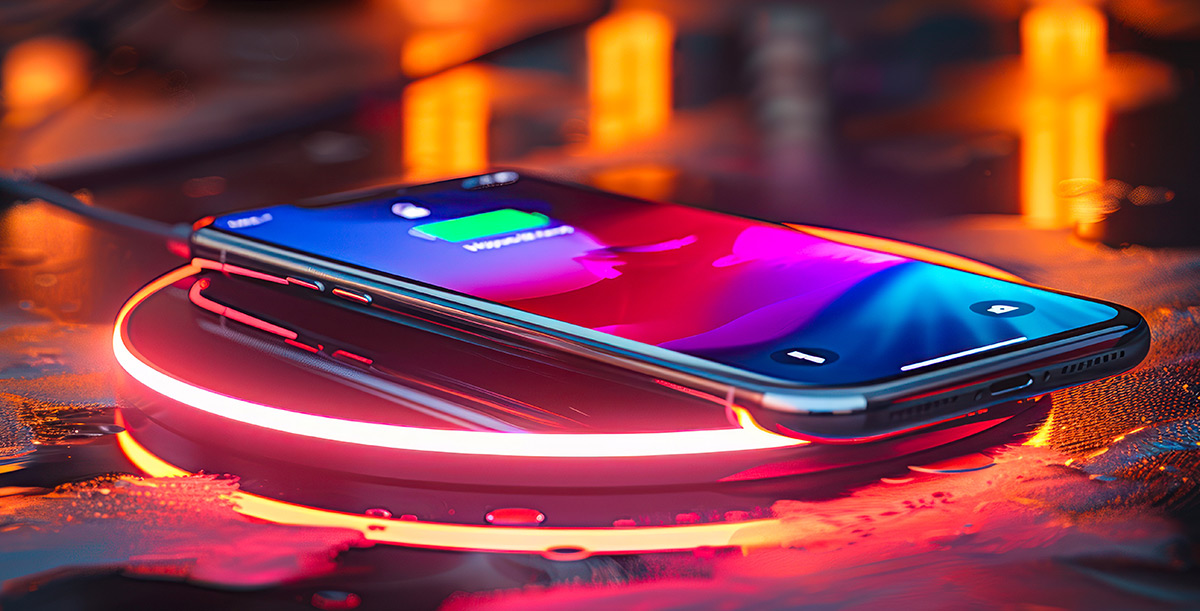
Which wireless charger should you choose?
When choosing a wireless charger, it is important to look at the supported charging standards, such as Qi, to ensure it works properly with most smartphones and mobile devices. It is also worth paying attention to the technical specifications of the charger, such as power output, to ensure efficient and fast charging. Additional features, such as LED indicators or adjustable stands, can significantly increase the convenience of use.
Advantages of inductive chargers:
- Convenience of use - simply place the device on the charger.
- No wear and tear of the physical charging port on the device.
- Aesthetic and modern design.
- Just one charger with the right specifications for multiple devices, even if they have different charging ports.
- Ability to replace the cable if it is damaged without having to buy a new charger.
Disadvantages of inductive chargers:
- High price of some models.
- The need to have a device compatible with wireless charging technology.
- Often slower charging compared to traditional chargers.
- For some models, you will need to remove the case from the device you are charging or get a special case in order for charging to take place correctly and efficiently.
- If you do not already have a suitable cable, you will need to purchase one separately, which adds to the overall cost.
- If you use external cables, especially cheaper or non-original ones, you may encounter compatibility problems or lower charging efficiency.
Comparison - when to choose a charger with or without a cable?
The choice between a charger with a cable and one without a cable depends mainly on your needs. If convenience and security are important to you, a charger with a cable attached may be a better choice. On the other hand, if flexibility and mobility are priorities, a charger without a cable may be a better choice.
Remember that safety of use should always come first. Whether you opt for a charger with or without a cable, make sure you choose products that meet all safety standards and are compatible with your device.
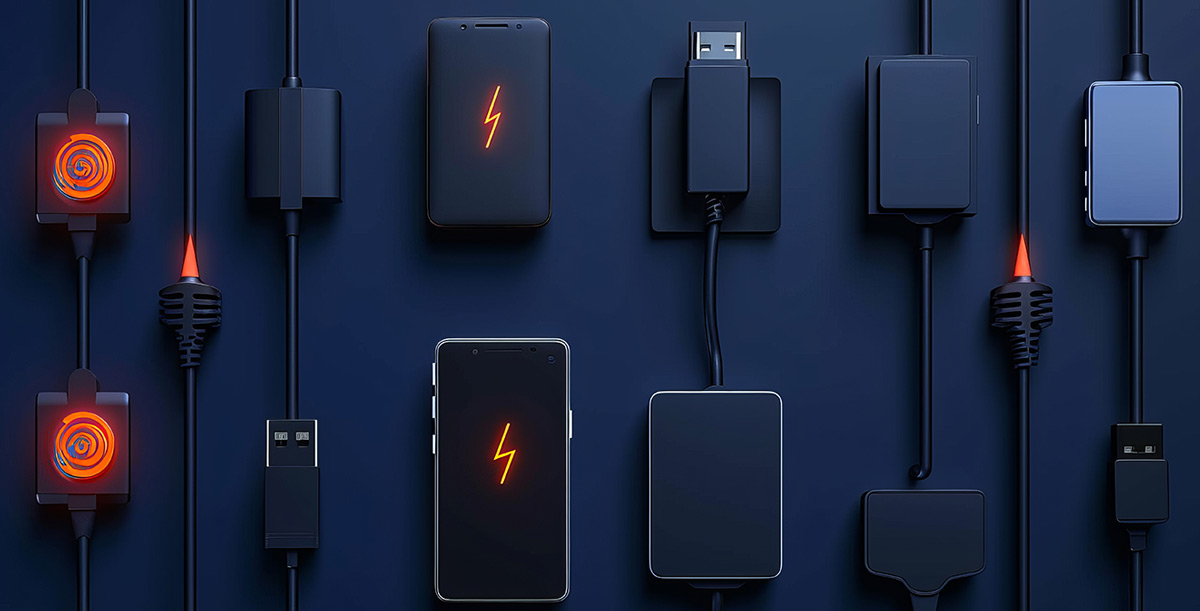
Bottom line - charger with cable or charger without cable? Which is better?
Choosing the right charger and USB cable may seem trivial at first glance. However, it turns out to be a much more complex and important issue - it has a significant impact on the efficiency and safety of charging electronic devices. It is important to consider not only the type of device to be charged, but also your own needs, such as charging speed or convenience of use. It is important to make informed choices based on compatibility, needs and product quality.
Both corded and wireless chargers have their place in our daily lives. Whichever option you decide on, at the Akyga shop you have access to a wide range of quality products to meet both your needs and the demands of your electronic devices. Remember to always choose products from reputable manufacturers who offer not only high quality, but also a guarantee of safety and compliance with standards. Take a look at the Akyga brand - find the perfect charging solution for your electronic equipment.
